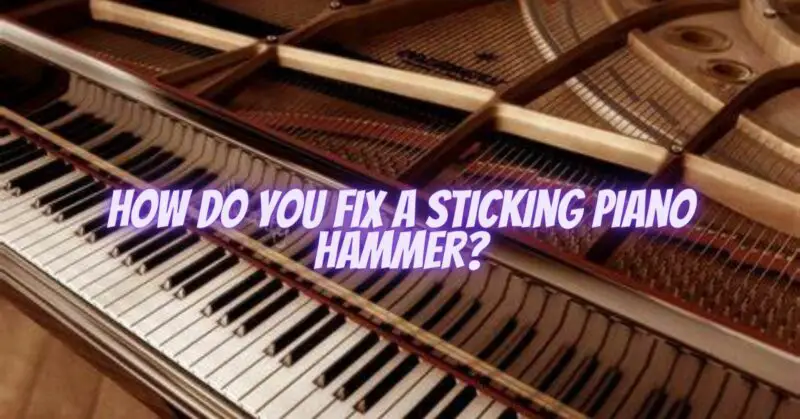A sticking piano hammer can disrupt the playability and produce unwanted sounds during piano performance. Addressing this issue promptly is crucial to restore the smooth and responsive touch of your instrument. In this article, we will explore techniques for fixing a sticking piano hammer, helping you to achieve consistent and enjoyable piano playing.
Identifying the Cause of a Sticking Piano Hammer: Before attempting any repairs, it’s essential to identify the underlying cause of the sticking hammer. Possible causes include:
- Accumulated Dirt and Debris: Dust, dirt, or debris can accumulate in the piano’s action mechanism, causing friction and resulting in sticking hammers.
- Misalignment or Wear: Misalignment or wear of the action components, such as the jack or flange, can lead to uneven or restricted hammer movement.
- Swollen or Misshapen Hammers: Changes in humidity or moisture levels can cause the hammers to swell or become misshapen, leading to sticking.
- Damaged or Worn Hammer Butt: A loose or worn hammer butt can cause the hammer to bind or stick during movement.
Fixing a Sticking Piano Hammer:
- Cleaning: Start by thoroughly cleaning the action mechanism, focusing on the area surrounding the sticking hammer. Use a soft brush or cloth to remove any dust, dirt, or debris. Be cautious not to apply excessive moisture.
- Lubrication: Apply a small amount of piano action lubricant to the contact points and moving parts of the action mechanism. This can help reduce friction and facilitate smoother hammer movement. Consult a piano technician for suitable lubricants and application techniques.
- Aligning or Adjusting Components: If misalignment is causing the sticking, carefully realign the affected components, such as the jack or flange, to ensure proper movement. Avoid excessive force and make small adjustments until the desired result is achieved. Seek professional assistance if you are unsure about proper alignment techniques.
- Sanding or Filing: If a swollen or misshapen hammer is the cause of sticking, lightly sand or file the problem areas to restore the proper shape and size. Be cautious not to remove excessive material, as it can affect the hammer’s weight and balance. Proceed gradually and test the hammer’s movement after each adjustment.
- Hammer Butt Adjustment: Inspect the hammer butt for any looseness or wear. Tighten or replace the hammer butt if necessary, ensuring a secure and smooth connection between the hammer and the action mechanism.
- Professional Help: For complex or persistent sticking issues, it is advisable to seek professional assistance from a qualified piano technician. They have the expertise and specialized tools to diagnose and address the problem effectively, ensuring optimal performance and avoiding potential damage to the piano.
Conclusion: Fixing a sticking piano hammer is crucial to maintain the instrument’s playability and sound quality. By identifying the cause, whether it’s accumulated dirt, misalignment, swollen hammers, or a worn hammer butt, and applying the appropriate techniques such as cleaning, lubrication, adjusting, or light sanding, you can restore smooth movement to the affected hammer. However, if you are uncertain or encounter complex issues, consulting a professional piano technician is highly recommended to ensure accurate diagnosis and effective resolution of sticking hammer problems.

